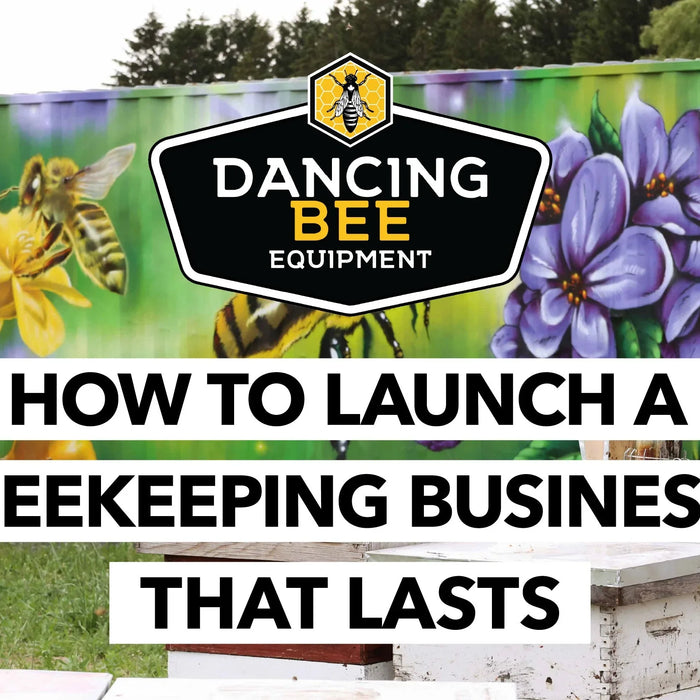There’s something quietly captivating about keeping bees. Not the curated, slow-motion videos online—but the real deal: early mornings, full suits in the heat, and the hum of thousands of wings working together. Lately, more people have been moving beyond backyard hives and turning their interest into a business rooted in the rhythm of the seasons. If you’re ready to take that step, it helps to build from a place of knowledge, patience, and practical decision-making. This isn’t a plug-and-play operation—it’s a business that grows with time, and the bees are always in charge.

Begin with a Purpose, Not a Pitch
It’s tempting to start with a brand name or a logo, but the real foundation is understanding your purpose. Maybe it’s environmental stewardship, or a desire to work more closely with the land. Maybe you’ve got a thing for honey, wax, and slow living—or maybe you’re just tired of the grind and looking for something more grounded. Whatever it is, knowing why you’re in this business helps shape everything else. It keeps your decisions focused, your voice authentic, and your resilience stronger when things don’t go as planned (and they won’t always go as planned).
Know the Rules Before You Build the Hive
Regulations aren’t the most exciting part, but they matter—a lot. Local bylaws can limit how many hives you can keep, where they’re placed, or how close they can be to property lines. In most provinces, you’ll need to register your hives and follow health protocols, including disease reporting and safe transport guidelines. Some municipalities even require permits or neighbour notification. Sorting this out early saves you stress down the line. A quick call to your local agricultural office or beekeeping association can give you a clear picture of what’s required in your area.
Keep Your Start Manageable and Learn As You Go
Beekeeping has a learning curve, and jumping in with too many hives too soon is a common mistake. Starting with two or three colonies allows you to observe differences, practise basic management, and build confidence without getting overwhelmed. If you’re new to working with bees, this scale is manageable enough to let you grow your skills organically. As your experience grows, so can your operation. And when problems come up—and they will—you’ll be in a better position to respond calmly and effectively.
Buy Gear from Suppliers Who Know the Industry
Your bees deserve quality, and so do you. The difference between cheap gear and well-made equipment shows up quickly—ill-fitting suits, warped frames, and faulty smokers can turn routine work into a hassle. Reputable suppliers like Dancing Bee Equipment offer tools designed by beekeepers, for beekeepers. Their hive kits, frames, extractors, and protective gear are made to last through more than a single season, and their catalogue reflects what people in the industry actually use. This isn’t about spending big—it’s about buying gear that supports your work instead of fighting against it.
Build a Website That Does More Than Sell
Your website isn’t just a storefront—it’s where people get a sense of who you are and what you care about. A well-designed site tells your story, shares your process, and offers visitors a personalized browsing experience that feels intentional, not generic. Use your own photos, write in your voice, and let your values show up on every page—from how you source materials to what makes your honey or wax worth taking home. People don’t just want products—they want a reason to care about where those products come from. Give them that, and they’ll remember you long after the sale.
Work With the Seasons, Not Against Them
This business runs on nature’s schedule. Spring is for hive checks, feeding, and expansion. Summer is peak production—monitoring colony health, managing space, and staying ahead of swarms. Fall is when you extract, bottle, prep for markets, and start preparing for winter. Winter is when the bees cluster and you shift gears: cleaning equipment, planning your sales strategy, and maybe building some new boxes in the garage. Understanding and embracing this cycle helps you make better decisions—and it keeps your work aligned with what’s happening in your hives.
Add Value Through Education and Engagement
The people who buy your honey or wax want to understand where it comes from. That curiosity is your opportunity. Share what’s happening in the apiary on social media. Offer hive tours if you’ve got the space and setup for it. Create simple content that explains how bees work, or what makes your process different. Education doesn’t need to be formal—it just needs to be honest. It builds trust, deepens loyalty, and gives people more reason to choose your products again and again.
Don’t Go It Alone—Find Your People
Beekeeping can feel solitary, especially during those long checks when it’s just you, the bees, and the buzz. But there’s a strong community out there—neighbours, mentors, associations, online groups—who’ve seen the same problems and figured out creative ways to solve them. Connecting with other keepers lets you trade tips, borrow gear, and learn from mistakes you haven’t had to make yourself yet. It’s also a reminder that you’re part of something larger. You’re not just running a business. You’re helping support a broader ecosystem of bees and humans alike.

This business isn’t about control—it’s about paying attention. You’ll make plans and the weather will ignore them. You’ll build up a hive and lose it to mites. But if you stick with it, listen closely, and adapt, you’ll build something with depth. Beekeeping, at its best, teaches you to slow down, pay attention, and trust the process. And if you get that part right, the honey is just the beginning.
Discover the ultimate beekeeping solutions with Dancing Bee Equipment, your trusted partner in expanding your apiary with top-quality tools and equipment!






